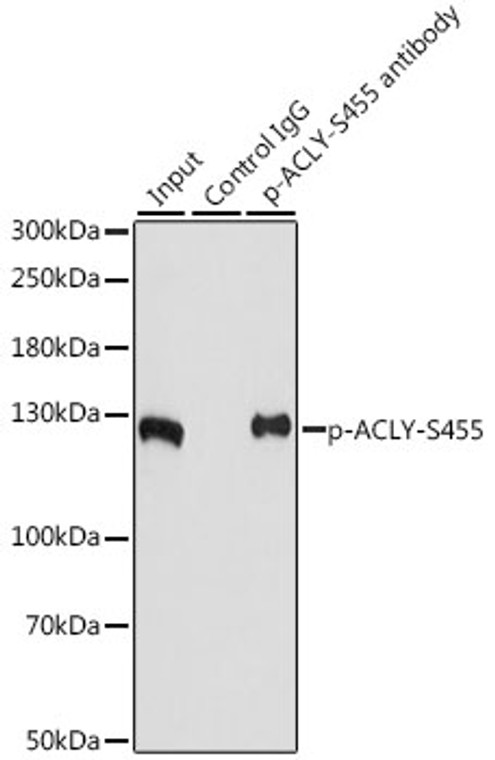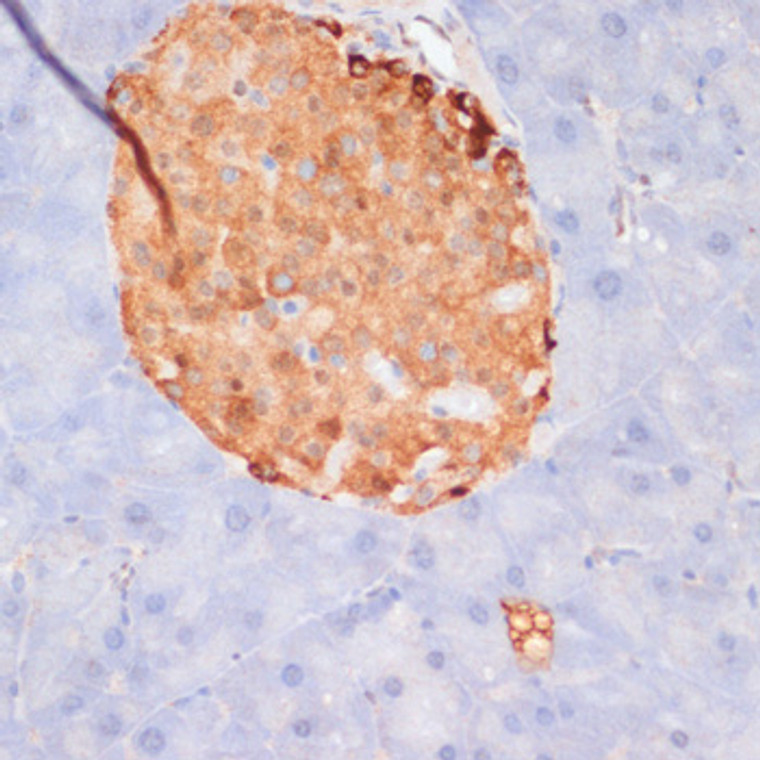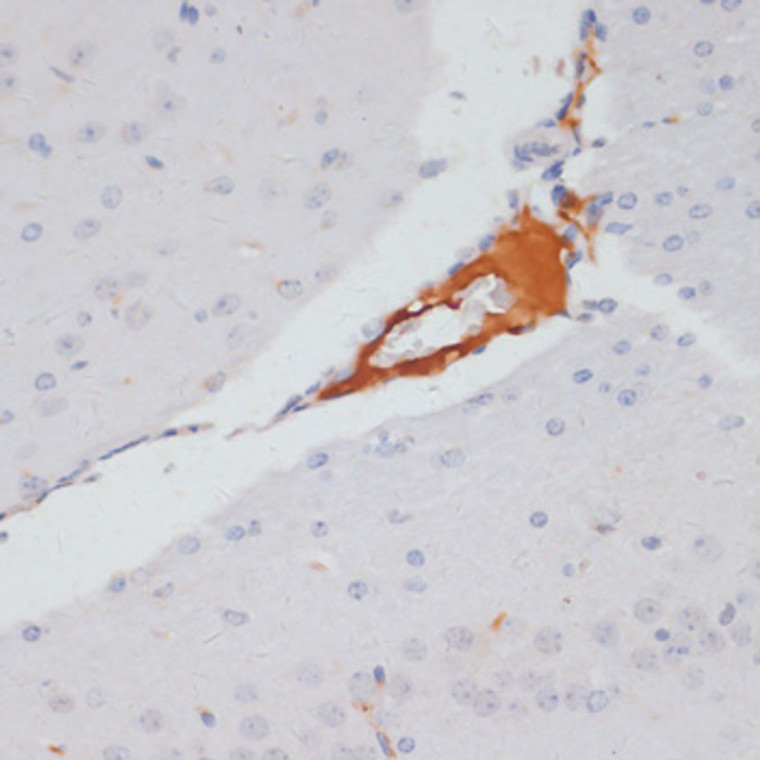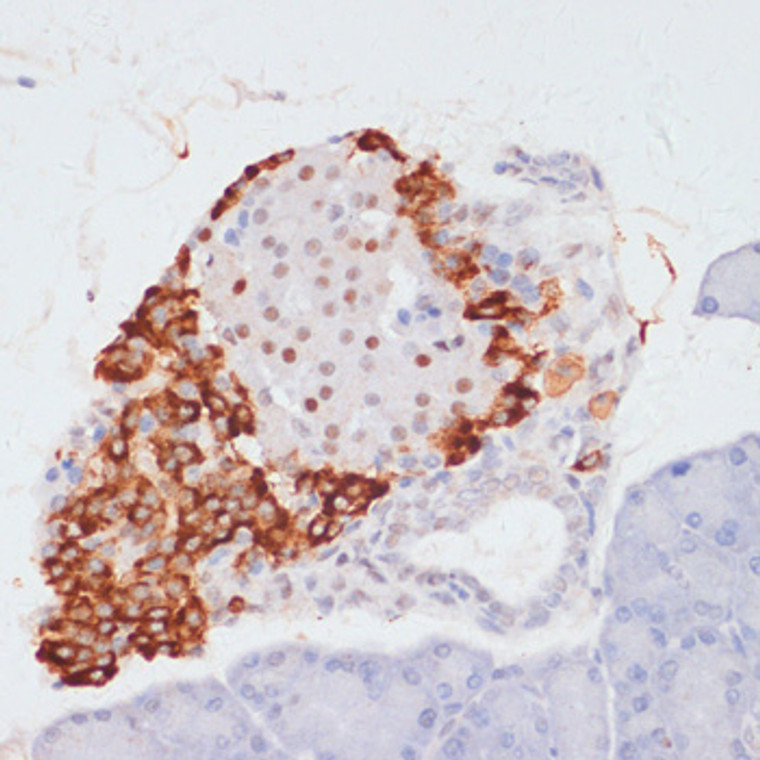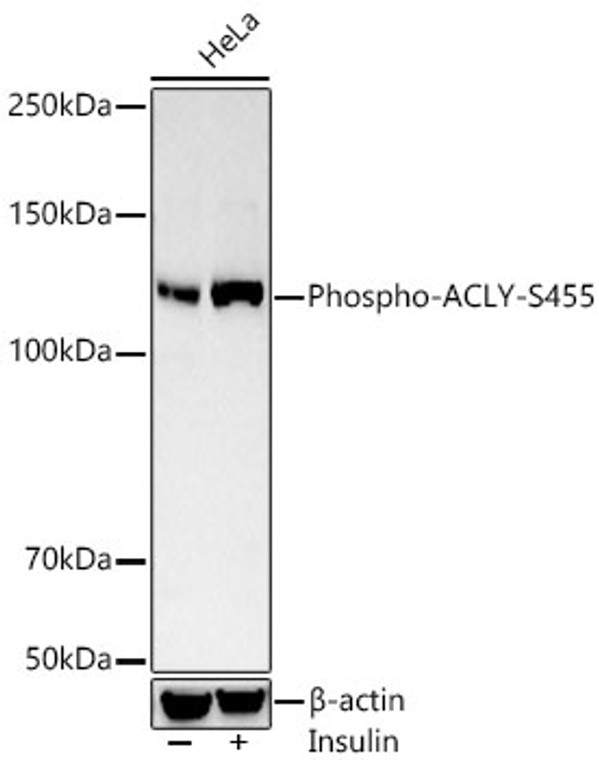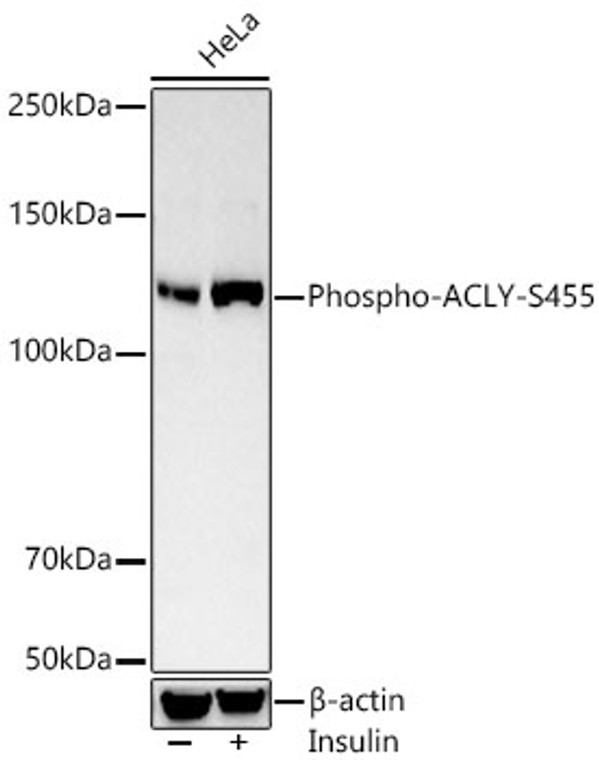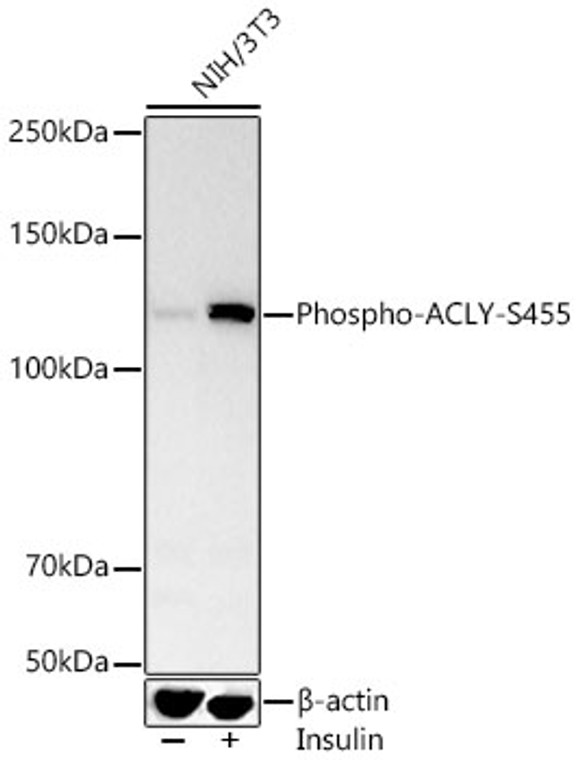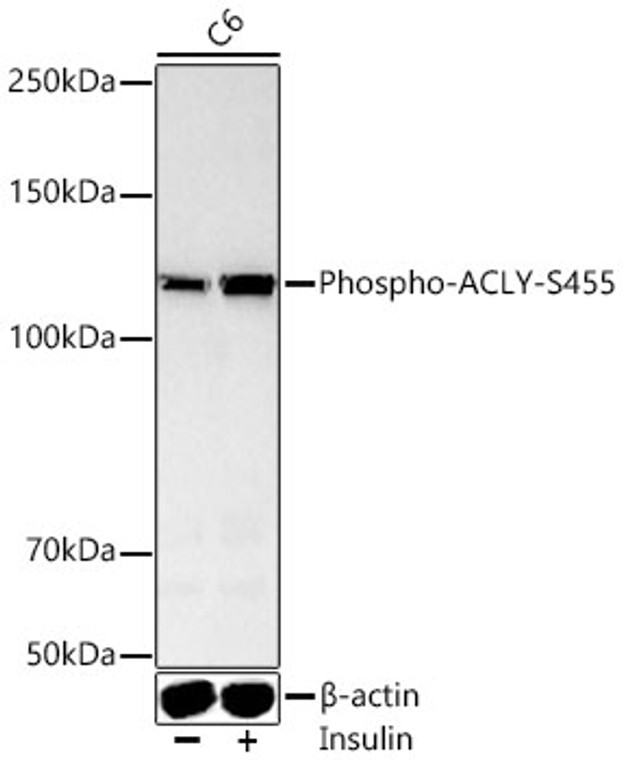| Host: |
Rabbit |
| Applications: |
WB/IHC/IP |
| Reactivity: |
Mouse/Rat |
| Note: |
STRICTLY FOR FURTHER SCIENTIFIC RESEARCH USE ONLY (RUO). MUST NOT TO BE USED IN DIAGNOSTIC OR THERAPEUTIC APPLICATIONS. |
| Short Description: |
Rabbit polyclonal antibody anti-Phospho-ACLY-S455 is suitable for use in Western Blot, Immunohistochemistry and Immunoprecipitation research applications. |
| Clonality: |
Polyclonal |
| Conjugation: |
Unconjugated |
| Isotype: |
IgG |
| Formulation: |
PBS with 0.01% Thimerosal, 50% Glycerol, pH7.3. |
| Purification: |
Affinity purification |
| Dilution Range: |
WB 1:1000-1:5000IHC-P 1:50-1:100IP 1:50-1:100 |
| Storage Instruction: |
Store at-20°C for up to 1 year from the date of receipt, and avoid repeat freeze-thaw cycles. |
| Gene Symbol: |
ACLY |
| Gene ID: |
47 |
| Uniprot ID: |
ACLY_HUMAN |
| Immunogen: |
A synthetic phosphorylated peptide around S455 of human ACLY (NP_001087.2). |
| Immunogen Sequence: |
PAPSRTASFSESRAD |
| Post Translational Modifications | Phosphorylated by PKA and GSK3 in a sequential manner.phosphorylation results in activation of its activity. Phosphorylation on Thr-447 and Ser-451 depends on the phosphorylation state of Ser-455. Phosphorylation on Ser-455 is decreased by prior phosphorylation on the other 2 residues. ISGylated. Acetylated at Lys-540, Lys-546 and Lys-554 by KAT2B/PCAF. Acetylation is promoted by glucose and stabilizes the protein, probably by preventing ubiquitination at the same sites. Acetylation promotes de novo lipid synthesis. Deacetylated by SIRT2. Ubiquitinated at Lys-540, Lys-546 and Lys-554 by the BCR(KLHL25) E3 ubiquitin ligase complex and UBR4, leading to its degradation. Ubiquitination is probably inhibited by acetylation at same site. BCR(KLHL25)-mediated degradation of ACLY promotes fatty acid oxidation and is required for differentiation of inducible regulatory T (iTreg) cells. |
| Function | Catalyzes the cleavage of citrate into oxaloacetate and acetyl-CoA, the latter serving as common substrate for de novo cholesterol and fatty acid synthesis. |
| Protein Name | Atp-Citrate SynthaseAtp-CitratePro-S--LyaseAclCitrate Cleavage Enzyme |
| Database Links | Reactome: R-HSA-163765Reactome: R-HSA-6798695Reactome: R-HSA-75105 |
| Cellular Localisation | CytoplasmCytosol |
| Alternative Antibody Names | Anti-Atp-Citrate Synthase antibodyAnti-Atp-Citrate antibodyAnti-Pro-S--Lyase antibodyAnti-Acl antibodyAnti-Citrate Cleavage Enzyme antibodyAnti-ACLY antibody |
Information sourced from Uniprot.org
12 months for antibodies. 6 months for ELISA Kits. Please see website T&Cs for further guidance


